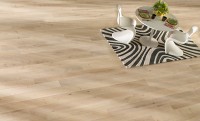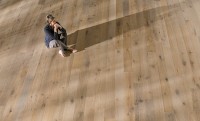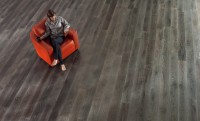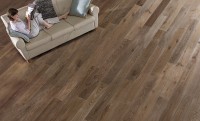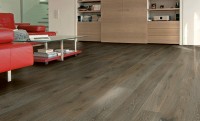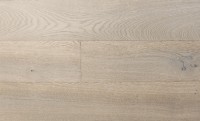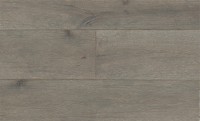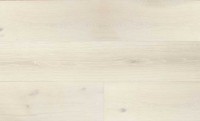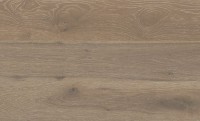|
Source: |
|
| Applications The white oak log is sought after by furniture makers, wine barrel makers (coopers), leather companies (tanners) and lumber companies. All of these users are competing for the same limited material. The name "French Oak" comes from the preferred use as wine barrel material. It is very hard, has a tight grain, low porosity and a high content of tannin. This high level of tannin allows the barreled wine to age by eating up oxygen and it gives the wine a sought after aroma and taste. The same tannin is also used by the leather industry as a natural leather softener. Live Sawn For flooring, the logs are generally "live sawn" in a horizontal manner only. After cutting, the boards are stickered and naturally air dried for 12-24 months. Before production into wide planks for flooring, the planks are slowly kiln dried for 30 days for added stability and to bring the moisture content to indoor levels. At this production time, we also use the high tannin content of the French Oak to accelerate the aging process to give different natural colors to the flooring plank without using any artificial coloring or stain. Grade Sawn Instead of cutting for highest yield of grade lumber, the "live-sawn" cutting method results in a variety of beautiful grain patterns within each individual board. Tight straight quarter grain, medullar flecks along the edges, and cathedral grain are all part of the same plank. Live sawn planks will also show all the various idiosyncrasies of the log, including knots, pith or mineral deposits. The best of real wood flooring French oak is the oldest most versatile flooring material. Each board is unique with its own character and always remains timeless. It has been used for centuries in castles, monasteries, chalets, villas as well as contemporary modern living. It shows off the best of real wood flooring. Over the years, French Oak matures from rich amber to a natural deep golden brown tone that never goes out of style. |
|
White Wash 58751T
White Wash 58751T, a part of the Engineered French Oak Collection by Palladio Wide Plank.SKU58751$0Whiskey 58754T
Whiskey 58754T, a part of the Engineered French Oak Collection by Palladio Wide Plank.SKU58754$0Antique Oak 58755T
Antique Oak 58755T, a part of the Engineered French Oak Collection by Palladio Wide Plank.SKU58755$0Tobacco Barn 58756T
Tobacco Barn 58756T, a part of the Engineered French Oak Collection by Palladio Wide Plank.SKU58756$0Nantucket 58759T
Nantucket 58759T, a part of the Engineered French Oak Collection by Palladio Wide Plank.SKU58759$0Driftwood 58752T
Driftwood 58752T, a part of the Engineered French Oak Collection by Palladio Wide Plank.SKU58752T$0Silver Lining 58762T
Silver Lining 58762T, a part of the Engineered French Oak Collection by Palladio Wide Plank.SKU58762T$0Aspen 58765T
Aspen 58765T, a part of the Engineered French Oak Collection by Palladio Wide Plank.SKU58765T$0Barley 58766T
Barley 58766T, a part of the Engineered French Oak Collection by Palladio Wide Plank.SKU58766T$0Graphite 58768T
Graphite 58768T, a part of the Engineered French Oak Collection by Palladio Wide Plank.SKU58768T$0

